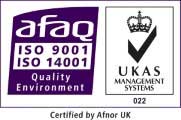Clydesdale's news blog
Proving Units
When Clydesdale gave a presentation at the OHLex exhibition in 2016, we discussed the method by which capacitive voltage detectors work correctly when placed inside a steady-state, 50Hz AC (UK lines) electric field above the unit’s configured threshold voltage. A link to this presentation is available here.
At their core, capacitive voltage detectors need to be placed within a uniform electric field, at a pre-set distance from a live line, in a voltage field level above the detector’s internally programmed “threshold”.
The value for this threshold should be compliant with the International standard IEC 61243-1.
The IEC standard sets upper and lower limits for where this threshold value should be calibrated based on the device’s operating range. This threshold is always stated with respect to the phase-to-phase line voltage.
The IEC standard describes how it is equally valid to have an onboard or offboard “test element” that is evaluated for performance and reliability as part of the device’s original IEC certification.
No distinction is drawn between the two scenarios. The “testing element” must be able to fully test the operation of the electrical circuits, energy source and any indicators (light / sound).
Onboard test elements do this testing within the devices onboard circuity and systems. Offboard test elements would include, what is more commonly known as, a proving unit.
To be a successful, IEC compliant external testing element any proving unit would need to be:
- Providing approx. 4kV AC @ 50Hz in a stable field. This is a typical threshold voltage for according to the IEC standard. This is based on a UK specific 11-33kV device as a guide.
- Providing a mechanical contact for the device’s electrode in an environment free of disturbances to the generated field. This would mean any metallic conductive testing parts need to be laid out in such away so as not to interfere with the required, stable field effect.
- Produce this voltage field for a reasonable duration to allow the device’s electronics to filter out any noise and identify a successful “live” signal.
- Provide suitable electrical insulation and interlocks to keep the user safe.
- Be compliant with the CE directive for Electro Magnetic Compatibility.
- Portable enough to be used in the field.
Unfortunately, we do not believe a device that can fulfil this brief exists within the market and so manufacturers of Capacitive voltage detectors have generally moved onto approved internal self-testing of devices.
As a guide, the Fameca TAG220 and the Fameca Vector from Clydesdale are fully IEC standards compliant and use a built-in, continuous self-test while powered on. The self-test checks every 50 milliseconds for correct operation of the whole electrical circuit, sensors , threshold value and battery level of course.


